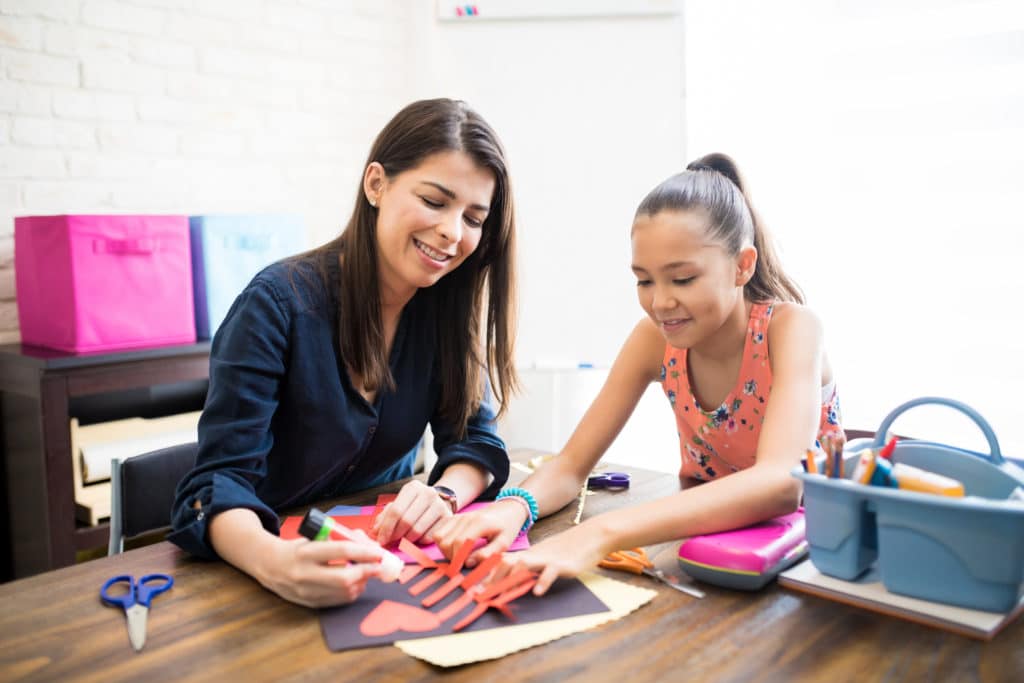
Ever since March 23, 2020, when the school where I work, Steel City Academy, transitioned to virtual learning, I’ve found myself constantly asking what education will look like moving forward. This school year, the majority of students at Steel City Academy are still learning virtually (a small percentage of students are learning in the classroom). Throughout the successes and unexpected challenges this pandemic has presented, the Responsive Classroom approach has been the glue that holds our classrooms together as we figure out what education should look like in these unfamiliar times.
The unintended positive of providing virtual education to our elementary students has been the opportunity to implement Responsive Classroom practices in spaces where students are not physically present. A positive community – one of the four domains of Responsive Classroom – is one in which students feel significant, experience a sense of belonging, and have fun. It was my goal to continue to provide this space for children no matter the learning context. In order to accomplish this goal, I set out to determine which Responsive Classroom practices would have the most impact in a virtual space. In the first six weeks, my focus was on coaching and developing our team with the implementation of teacher language, Morning Meeting, and Interactive Modeling.
Teacher Language
We have found success by starting the school year implementing with fidelity the reinforcing, reminding, and redirecting language that is connected to our core values. Our teachers understand that their words are indeed a powerful teaching tool. It is a challenge to build community and provide safety for our students in a virtual space, but our teacher language is our stronghold. We use our words to reinforce desired behavior and to hold students accountable to living out behavioral expectations because they are intrinsically motivated to do so.
Morning Meeting
Our virtual learning community has been spearheaded by Morning Meeting. We have had great success so far this school year getting students to log on each morning to participate in Morning Meeting. This was a challenge last spring because we were only talking to students, and it was difficult to maintain high levels of engagement. In response to this challenge, I implemented Morning Meeting slides so that students could visually follow along with the components of Morning Meeting (greeting, sharing, group activity, and morning message). Teachers implement this structure with fidelity and have the opportunity to make it their own by decorating and personalizing their slides. Students are engaged and eager to be included in the Morning Meeting. We have had so much success with Morning Meeting that we now use closing circles to end each day. Both of these structures help build connection and partnership with families; it’s common to log on for a Morning Meeting or closing circle and see parents side-by-side with their student.
Interactive Modeling
Through all the successes, a constant challenge is teaching and modeling virtual expectations for students so that teachers can deliver engaging lessons. Over the summer, I read and researched virtual routines and procedures and the most effective way to teach them to students. I soon realized the answer was Interactive Modeling. So far this year we have been creative using Interactive Modeling. Our team has created videos modeling procedures for students such as muting and unmuting their microphones, turning the camera on and off, using the chat feature, raising their hand to gain attention, and virtually engaging in academics. It isn’t easy, but implementing Responsive Classroom practices creates the consistency our teachers and students need.
Although virtual learning is not optimal, the pandemic has afforded us the opportunity to build partnerships with our families. For parents, this has meant an opportunity to engage more than ever with their student and teacher. Our parents feel connected to the school and Responsive Classroom practices has contributed to this opportunity. The lesson here is clear: don’t let the pandemic define education for students. These new circumstances are an opportunity to be creative and implement the Responsive Classroom practices that will have the greatest impact on student learning and class culture in your learning community.
Written by Bridgette Kelly, Elementary Director of School Culture and Responsive Classroom Consulting Teacher